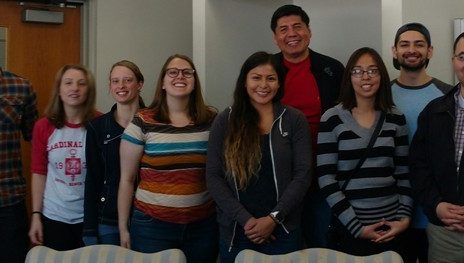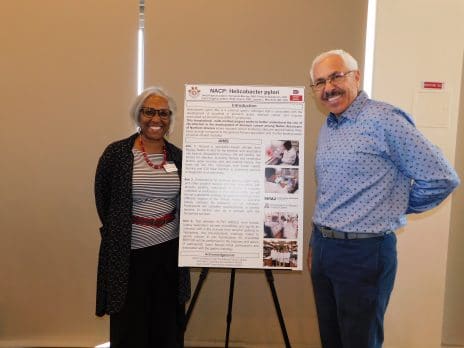Helicobacter pylori and Stomach Cancer Among Native Americans in Northern Arizona
Co-Leaders
Fernando P. Monroy, PhD (NAU), Priscilla Sanderson, PhD, CRC (NAU), Robin Harris, PhD, MPH (UACC) Juanita L. Merchant, MD, PhD (UACC)
Helicobacter pylori is among the most common bacterial infections in the world, with infection rates ranging from 80% in developing countries to 20-25% among developed nations. It is the most common infectious agent linked to any malignancy. Prevalence varies considerably by age, race/ethnicity and socioeconomic status (SES) with lower SES groups having higher prevalence in the United States and worldwide. Infection with H. pylori is associated with increased risk of development of secondary outcomes including peptic ulcer disease, chronic gastritis, mucosa-associated lymphoid tissue (MALT) lymphomas and stomach (gastric) cancer, specifically non-cardia cancers. Approximately 89% of non-cardia gastric cancer cases, representing 78% of all gastric cancer, are estimated to be attributable to chronic H. pylori infection.
The overall incidence of gastric cancer has declined over time in the US, but certain populations continue to experience a significant burden from this disease, and the number of cases and deaths due to gastric cancer is expected to rise. Native American (NA) populations are at higher risk of gastric cancer than the general US population. Incidence rates for gastric cancer among the Navajo are 14.2/100,000, making this cancer second only to colorectal incidence and 3-4 times as high as the non-Hispanic white Arizona population. Most data on H. pylori prevalence in NA communities come from work in Alaska and Canada, where infection rates range from 38% to 85%. Data on prevalence and disease-association among Navajo is lacking but it is quite prevalent based on IHS clinical reports.
This study will engage community participants in order to both understand and increase awareness of current perceptions and risk factors for stomach cancer and H. pylori within Navajo Nation communities and a preliminary estimate of H. pylori prevalence. We also plan to identify Navajo patients undergoing endoscopy for symptoms of gastric disease. The goal is to obtain an insight into the prevalence of different H. pylori strains present in this population. Certain strains are more virulent and are associated with more severe disease. Identification of genetic variants would permit a personalized treatment as those individuals at high risk may be better candidates for preventive treatment or modified endoscopy screening to treat early carcinoma.


